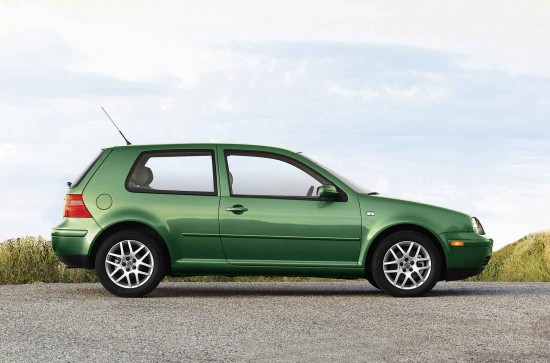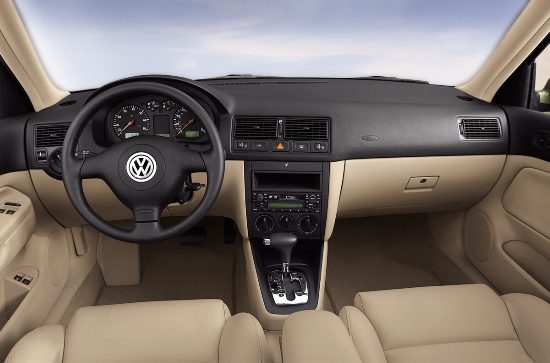2002 Volkswagen Golf
Volkswagen’s Golf is a master of disguise.
It’s a hatchback, but it doesn’t feel like the little economy cars that dotted America’s roadways through the 1980s. Those were — I’ll try to say this nicely — noisy, ugly rust buckets that felt like driving wheeled cigar boxes.
This new hatchback is a far cry from the old ones. Sure, it’s small, but it doesn’t seem cramped. It’s also inexpensive, but it doesn’t feel cheap. It’s more practical than many small SUVs, but it’s easy to maneuver and can be downright fun to drive.
In essence, it’s a hatchback that doesn’t feel like one.
Hop inside the cabin, and the first thing you notice is how surprisingly nice everything looks and feels. Colors, textures and stylized gauges blend in a symphony of great interior design.
Look closer and you’ll notice how well everything fits, from dash pieces to leather or cloth trim on the doors and seats. The dash materials seem custom fitted and snugly secured, almost like they’re glued onto solid granite by a master craftsman.
In typical German fashion, switches and knobs feel tight and precise each time they flick or twist. Turn signals respond with a nice “click,” and everything from the radio dials to the windshield wiper controls are designed to give the driver feedback.
Thankfully, the driving experience is designed for the same thing.
The Golf features a taut, sporty suspension that practically begs to be tested in curves. Body roll and nose dive are kept to a minimum, making for a great car to blast down country roads. Steering is among the very best in its price range, and brakes feel heavenly with their progressive response and ample stopping power.
On the flip side of this sporty demeanor, the Golf isn’t particularly comfortable for long trips. It has enough space and a pleasant enough cabin to be a good tourer, but the aggressive suspension and sensitive steering become annoying after hours on the interstate.
The suspension and tires transmit little bumps into the cabin — great for twisty roads when you want to feel the car’s performance — but those little bumps turn into a constant low-pitched noise at high speeds. Wind noise could be improved as well, but it isn’t awful.
A five-speed automatic transmission is another piece of shocking sophistication for a hatchback. It shifts smoothly and quietly, plus it has the Tiptronic gear-selection tool that lets you drive it almost like a stick-shift. If you want better performance and more fun, opt for the five-speed manual gearbox. It’s cheaper than the automatic and is worlds better than having to use Tiptronic to hold gears through corners.
Depending on what you plan to use the Golf for, a whopping four engines are available. Volkswagen uses some funky nomenclature, so here’s a glossary:
— TDI: 1.9 liters, 90 horsepower, four cylinders, diesel.
For compact car buyers, the Golf really has something for everybody. You might call it the new “People’s Car.”








